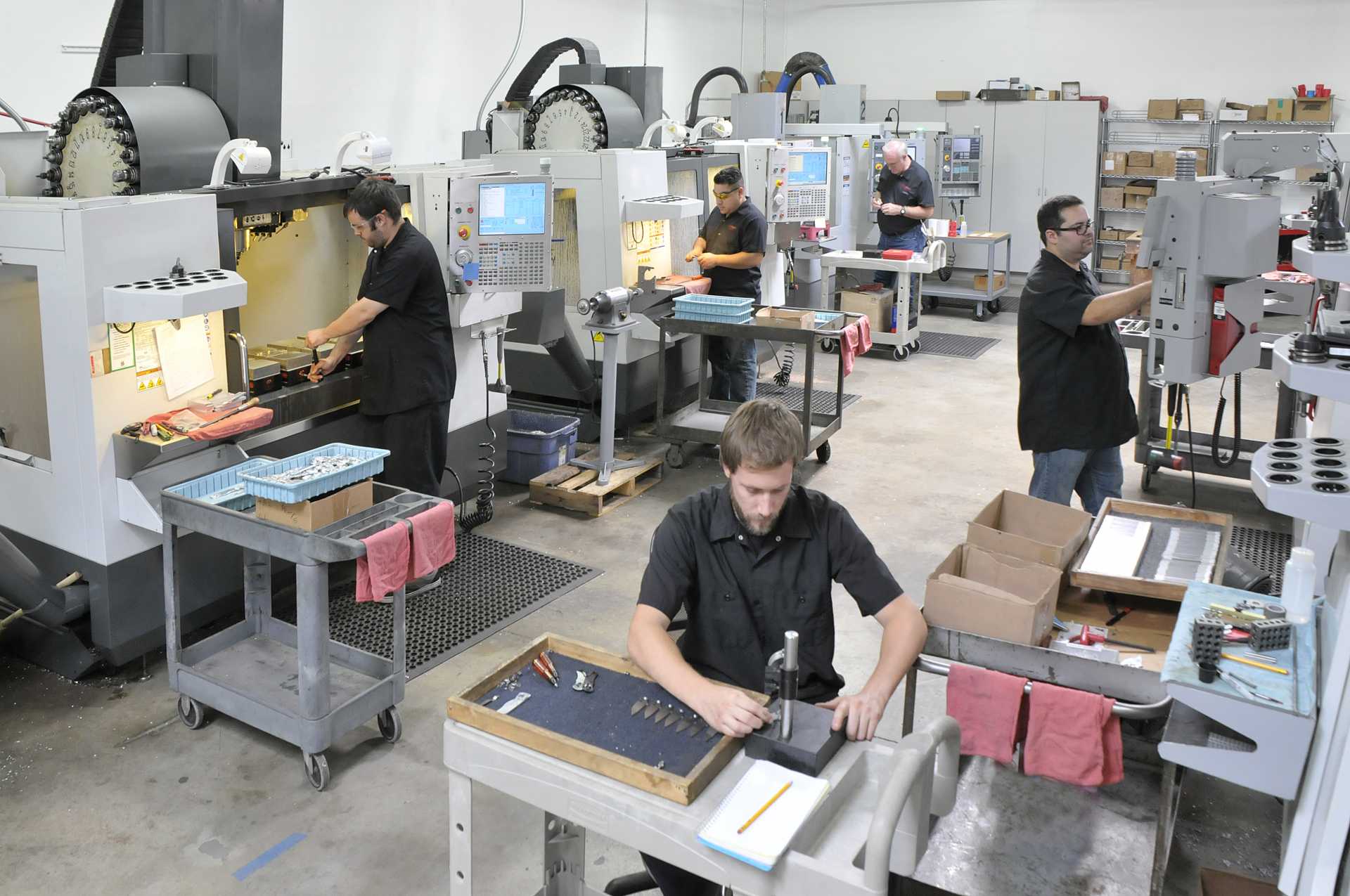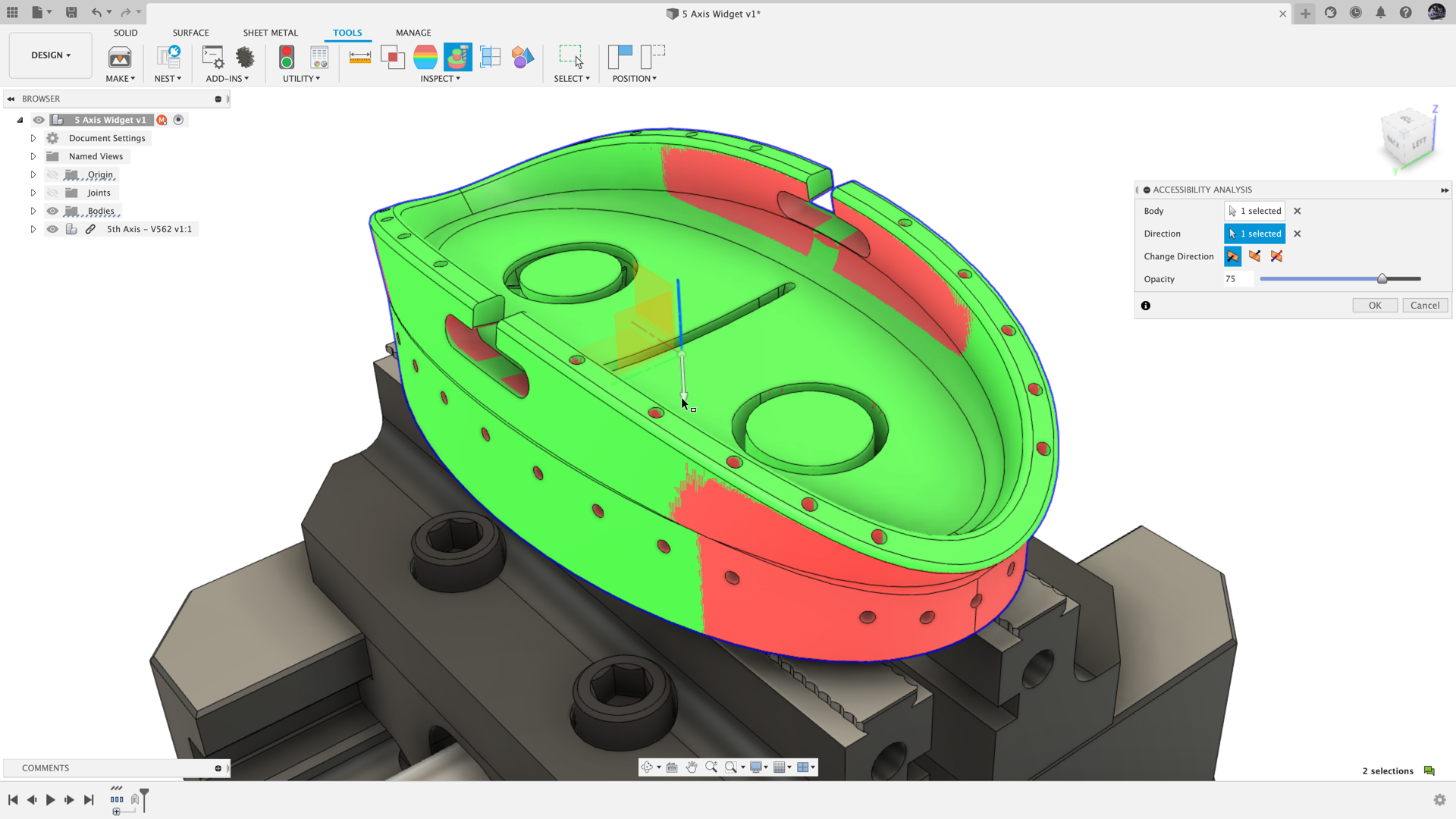Design Tool Holders In Fusion 360
Pressure to condense delivery schedules is unrelenting because every minute you save is a minute available for finishing another project. Automation is a proven way to speed up design and manufacturing, make processes more consistent and reduce the risk of errors and rework.
 Modern high tech CNC precision machine shop with multiple operators at various machines
Modern high tech CNC precision machine shop with multiple operators at various machines
Fusion 360 includes automated programming tools to reduce delivery time, such as hole recognition which detects hole profiles, and programmes them automatically, speeding up these decisions and delivering the same output no matter who programmes the machine. Toolpath operations such as Steep and Shallow automate finishing of freeform surfaces by automatically detecting surface slope and applying the optimal strategy. And built-in collaboration tools reduce delivery time because CNC programmers are automatically notified if a new version is available so toolpaths can be quickly regenerated.
2. Maximising CNC utilisation
Manufacturing departments and job shops want to ensure that every machine is used to its fullest extent and maximise ROI. This is more critical for 5-axis machines because errors are more expensive to fix.

Fusion 360 helps manufacturing teams produce safe, predictable NC code that maximises spindle uptime. Accessibility analysis shading creates a quick visual reference and indicates whether a part can be fully machined from a single direction. This speeds up decisions about orienting and fixturing so machining starts sooner.
 Post-machining of a metal additive component
Post-machining of a metal additive component
Multi-axis positional machining, such as 3+2, reduces fixturing cost and minimises setups. Tool axis directions are easy to select and calculate rapidly with efficient patterns and ordering options for multi-part machining on tombstones.
For complex parts, Fusion 360 uses shorter, more rigid tools to reduce vibration and improve surface quality during finishing. This is accomplished with toolpath options and tilting methods such as lead, lag and sideways lean which cut with the side of the tool to use its full flute length.
Automatic collision avoidance maximises uptime too. If Fusion 360 detects a collision between the part and the tool or holder, the tool automatically tilts away. Intelligent smoothing avoids erratic motions while tool axis limits control of how far each tool can tilt.
3. Improving Part Quality
Any speed improvement will be meaningless if it compromises part quality so Fusion 360 includes features to maintain high part quality and consistency.
Spindle-mounted probing operations allow you to automate setup and part verification. Manual setup requires carefully jogging of the machine and clocking the location to get the most accurate position, which is difficult and time-consuming. With Fusion 360, setup, programming and verification are one experience. You can setup and check stock material in process components and finished parts directly on the machine and create toolpaths, all without leaving Fusion 360.
 Fusion 360 Accessibility Analysis
Fusion 360 Accessibility Analysis
When it's difficult to align parts using traditional methods, Part Alignment offers a faster workflow. During setup, the measurement sequence is post- processed as NC code and run on the machine. The results are read back into Fusion 360 to generate part alignment automatically. This is useful for irregular, non-prismatic parts and heavier parts that are physically difficult to manoeuvre.
Another point of vulnerability happens when you take the part off the machine for inspection. With Fusion 360, you can verify the part without removing it, thus avoiding the risk of repositioning and addressing any unexpected variations sooner.
4. Filling the Skills Gap
Your company may be growing, with more new people with less experience, or you may have skilled team members retiring. Either way, the skills gap is a challenge of knowledge transfer.
Fusion 360 can help with this by changing the way you share data. For example, it allows you to store important manufacturing details and best practices as machining templates that everyone can use to improve programming consistency and reach peak productivity sooner.

Entry-level Autodesk Fusion 360 workshop taught at Diablo Valley College in partnership with Project Lead the Way to high school educators. Autodesk's education field team member, John Peros, led the workshop
All of this data is stored and shared in the cloud, making it easier to get the information you need, whether on a desktop or mobile device. Cloud collaboration also improves workflow among designers, engineers and machine operators. When a design is updated, the manufacturing department can access it in the cloud and start preparing it for manufacture while shared assets like fixtures, tools, post-processors, setup sheets and even NC code can be stored in the cloud too.
Easy access to centralised data means everyone can work efficiently. Programmers can share setup sheets with operators. Operators can update cloud tool libraries for programmers. Designers can send design changes to programmers. With Fusion 360, everyone can be confident they are looking at the most recent data.
All images courtesy of Autodesk
Design Tool Holders In Fusion 360
Source: https://www.themanufacturer.com/articles/autodesk-tackles-manufacturing-software-challenges/
Posted by: behlerquied2000.blogspot.com

0 Response to "Design Tool Holders In Fusion 360"
Post a Comment